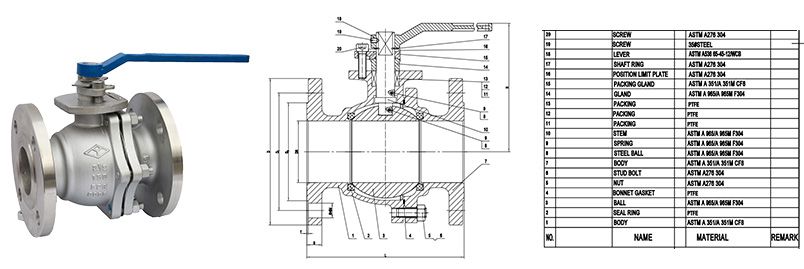Technical Requirement:
1. Design and Manufacture: API 6D
2. Face to Face: ASME B16.10
3. Flange End: ASME B16.5
4 Test: API 598
Product Details

API stainless steel ball valve casting refers to the manufacturing process and specifications of ball valves made from stainless steel, designed and produced to meet the stringent standards set by the American Petroleum Institute (API). These valves are integral components in controlling the flow of fluids in various industrial systems, especially in oil and gas, chemical processing, and other sectors that demand high reliability and performance. If you are interested in our products, please contact us as soon as possible.
API stainless steel ball valves are typically produced using either investment casting or sand casting techniques:
Investment Casting: This process involves creating a detailed wax model of the valve, which is then coated in a ceramic material to form a mold. Molten stainless steel is poured into the mold to form the valve components. This method is ideal for producing precise and complex parts with a high-quality finish.
Sand Casting: In this method, a sand mold is used to shape the molten metal. It is more cost-effective and suitable for larger parts but offers less precision compared to investment casting.
Once cast, the valve components undergo machining, assembly, and rigorous testing to ensure they meet API standards.
Stainless steel ball valves offer several key benefits:
Corrosion Resistance: Stainless steel is highly resistant to rust and chemical corrosion, making it suitable for a wide range of applications, including those involving aggressive chemicals or saltwater.
Durability: Stainless steel valves can withstand high pressures and temperatures, ensuring long service life even under challenging conditions.
Hygiene: Stainless steel is easy to clean and doesn’t harbor bacteria, making it ideal for use in food processing and pharmaceutical industries.
Strength: The material's strength allows for the production of valves that can handle high-stress environments without deforming or breaking.
Main parts and materials
| Parts Name | Materials |
| Body | ASTM A351 |
| BALL | ASTM A965 |
| Seat Ring | PTFE |